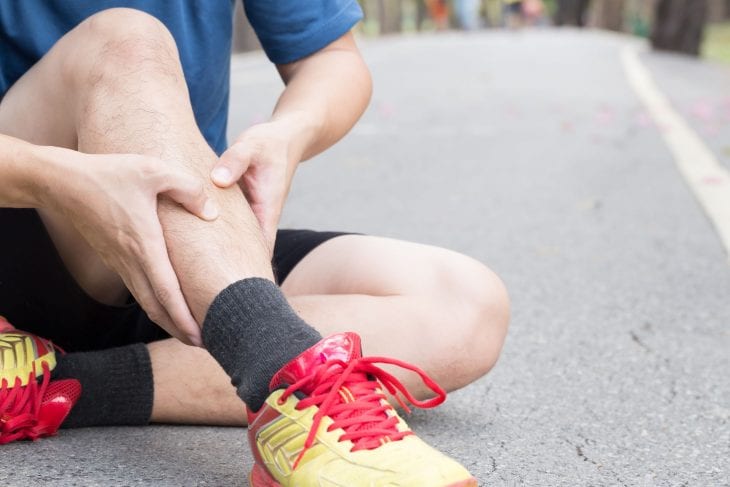Shin splints are common and painful. Of course, athletes and runners may experience shin splints more often, but the truth is anyone can have pain from shin splints regardless of their activity. Medial tibial stress syndrome, commonly known as shin splints, is a condition that makes the shin hurt.
The shin is the leg part between the ankle and the knee but on the front side. MTSS is sometimes referred to as shin splints because the pain is located over the shin bone. This condition is among is very common in athletes and affects both the muscles on the inner side of the shin and the bone that it connects to.
Up to 35 percent of athletes who participate in activities such as long distance running, jumping, playing basketball, and tennis are affected by this condition. People such as military personnel and dancers are others who can also be affected by the condition. A physical therapist can, however, teach you how to some exercises and strategies of avoiding MTSS while they can also help you recover from the condition.
Physical Therapists and their Assistants are the most common medical professional to treat shin splints. If you are interested in treating this medical condition then you can learn more about becoming a Physical Therapist Assistant.

Img source: hearstapps.com
Contents
What are Shin Splints?
MTSS (Medial Tibial Stress Syndrome aka Shin Splints) comes about when the tibia, the main sin bone, experiences too much stress. The stress can be caused when the muscle attached to the shin causes an overload on it. The muscles we are talking about include the posterior tibialis muscle, the flexor digitorum longus muscle, and the soleus muscle.
The most common risk factors of MTSS include:
- Over-pronation (flattening of the foot arch while standing)
- Being that athlete who is always running or jumping
- Being female
- Excess hip range of motion
- Smaller calf girths ( in males)
- High BMI greater than 20.2
What do Shin Splints Feel Like?
If you experience soreness in the mid or the bottom third part of the inner part of the shin, then it is an indication that you may have MTSS. This pain may occur after participating in exercise and may be severe when you touch a tender spot.
The pain of the condition is usually felt more at the start of exercise, but the pain fades the more you participate in an exercise. Over time though, the pain can get severe and can now be felt throughout the time you are in exercise, and can even continue after you complete the exercise.
What Is The Treatment for Shin Splints?
Your physical therapist performs a thorough examination and puts down information about your health history. Your therapist goes on to assess your body strength, flexibility, mobility, and your running and walking movements.
To diagnose the condition, your therapist is going to apply some pressure on the ankle, shin, and the foot areas. The most certain symptom of MTSS is one when there is pain felt when the therapist applies pressure over certain parts of the shin.
Physical Therapy Exercises for Shin Splints:
Physical Therapy Treatment for Shin Splints:
How Can Physical Therapist Assist?
Your therapist is going to find out the risk factors that brought about the MTSS and is going to teach you the methods of addressing these factors. The therapist is going to develop a treatment plan that is specific to your particular condition to encourage recovery and prevent re-injury.
For pain relief, your therapist may prescribe the following:
- Rest from the provoking activities
- Icing of the tender spots for five to ten minutes, once to thrice per day.
- Exercises that are going to stretch softly the muscles near the shin
- Taping the affected leg muscles
- Direct massaging to the affected tissue
To assist in strengthening the deteriorated muscles, the therapist may prescribe either:
- Activities that increase the rotation of hips and extension to reduce stress on the lower part of the leg.
- Exercises that increase shin muscle strength and those that decrease overpronation.

Img source: verywellfit.com
Your therapist may also prescribe:
- Foot and calf muscle stretches
- Single leg exercises and reaching exercises
- Modification of leg and foot control while running or walking
- New footwear that offers better support when exercising
- Use of orthotics that support the arch of the foot in case the feet flatten out extremely, or if you have weak foot muscles
Can MTTS Be Prevented?
To prevent MTSS, physical therapists prescribe the following:
- Going for an annual functional fitness assessment that includes strength, mobility, and flexibility. If you are active in some sport, then sport specific analyses are important.
- Doing dynamic stretches before exercises and static after that
- Doing strength and endurance activities for the pelvis, foot and hip muscles
- Following a recommended training routine when beginning or continuing your training program.
- Your physical therapist can give you more information about these exercises to guarantee optimum health and strength and to prevent MTSS.
If you are interested in learning more about preventing MTSS then you can visit the PTA Guide to learn about a career as a physical therapy assistant.
Are you a PT or PTA that has worked with patients experiencing shin splints? Tell us about your experience in the comments below!
